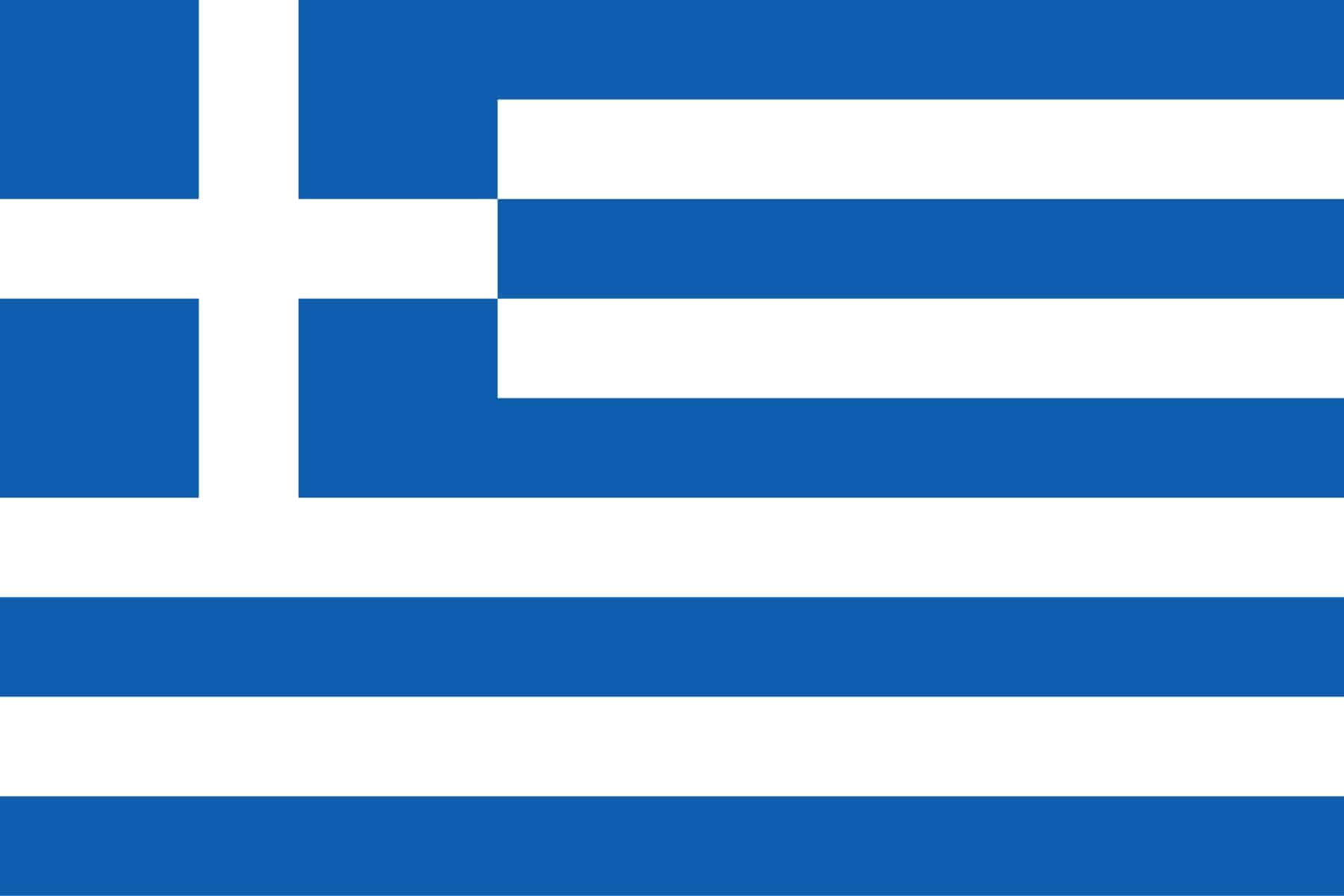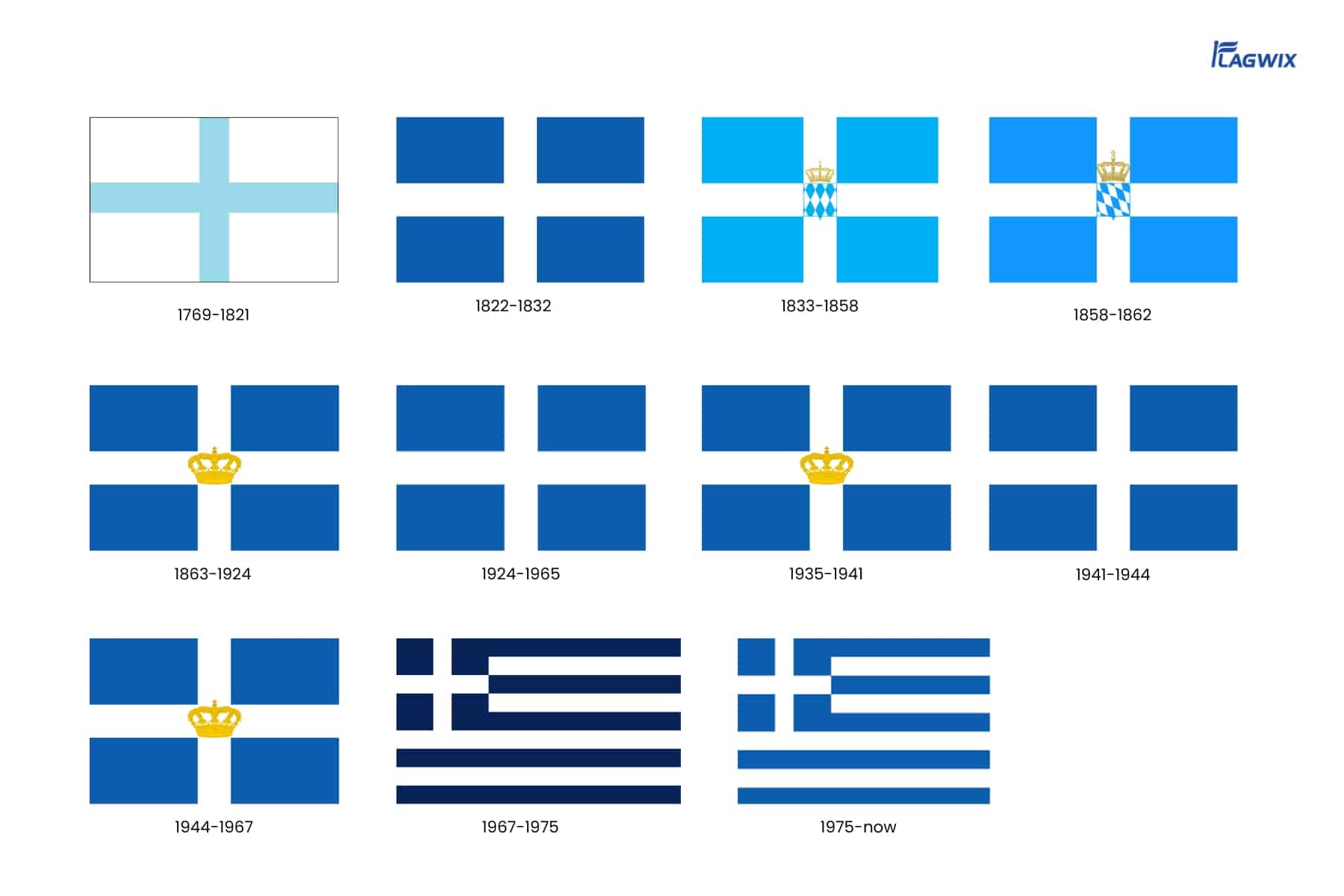Estimated reading time: 6 minutes
Key Takeaways
- The Flag of Greece is a national symbol of freedom, faith, and heritage.
- Nine blue and white stripes represent the phrase “Ελευθερία ή Θάνατος” (Freedom or Death).
- The cross in the canton underscores the importance of the Greek Orthodox faith.
- Design elements draw inspiration from nature and the country’s struggle for independence.
- Greek Flag Day is celebrated on October 27 every year.
Table of Contents
The Greece flag is instantly recognizable with its elegant combination of blue and white. But beyond its visual appeal lies a powerful story of national identity, religious devotion, and the fight for freedom. In this article, we’ll explore the flag of Greece in depth—its design, symbolism, history, and how it connects with both modern and ancient Greek culture.
Contents
Greece Flag Name and Official Terminology
The name of the Greece flag in Greek is “Galanólefki” (Γαλανόλευκη), which literally translates to “blue-white.” This simple name perfectly captures the flag’s most distinctive visual characteristic and is commonly used by Greeks when referring to their national symbol.
Officially, it’s also known as the “Kyanos kai Lefkos” (Κυανός και Λευκός), meaning “blue and white” in more formal Greek. In international contexts, it’s simply called the “Flag of Greece” or the “Greek Flag.”
The flag is sometimes poetically referred to as the “Flag of the Hellenes,” connecting it to the ancient Greek term for the Greek people and emphasizing the continuity between ancient and modern Greece.
What Does the Flag of Greece Look Like?
The official flag of Greece consists of nine horizontal stripes that alternate between blue and white. In the top-left corner sits a blue square with a white Greek cross, symbolizing Greek Orthodoxy.
- Stripes: 5 blue, 4 white
- Upper hoist-side canton: Blue with a white cross
- Aspect ratio: 2:3
This simple but powerful design makes it one of the most distinct and symbolic flags in the world.
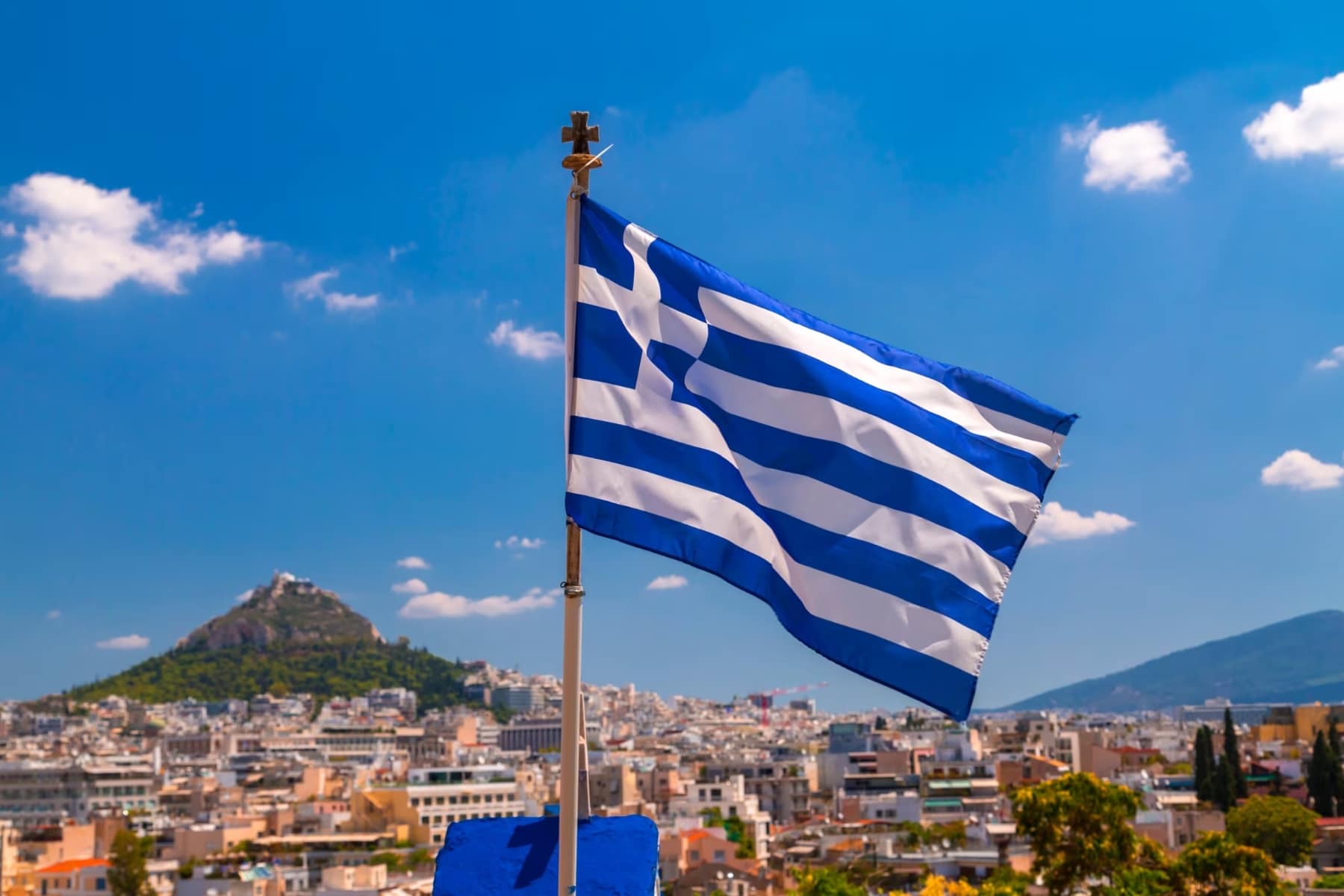
(Source: Mappr)
Greece Flag Meaning
So, what do those blue and white stripes stand for?
One popular interpretation is that the nine stripes represent the nine syllables of the phrase:
“Ελευθερία ή Θάνατος” — “Freedom or Death” — a motto used during Greece’s War of Independence.
-
Blue symbolizes the sea and sky — natural elements that have always surrounded Greek life.
-
White stands for purity, a reflection of the Greek people’s desire for freedom and peace.
-
The white cross represents the deep-rooted influence of the Greek Orthodox faith in the country’s culture and history.
The Flag of Greece History
The history of the Greek flag is a journey through different eras, each leaving its mark on the nation’s symbols. Interestingly, there was no single ancient Greek flag as we understand flags today. Ancient Greek city-states used various symbols, banners, and standards, but the concept of a unified national flag didn’t exist in antiquity.
During the Byzantine Empire, various religious and imperial banners were used, often featuring the double-headed eagle and Christian symbols. The Ottoman period saw Greece under foreign rule, with no independent Greek flag flying over the land.
The modern Greek flag emerged during the Greek War of Independence (1821-1829). Revolutionary leaders needed a symbol to unite the Greek people and distinguish their forces from Ottoman troops. Several designs were proposed and used during this period, including flags with different arrangements of crosses and stripes.
The current design was officially adopted on December 22, 1978, though variations of it had been used since the 1970s. This makes the Greek flag relatively young compared to some other national flags, despite representing one of the world’s oldest civilizations.
The Athens Greece Flag and Regional Variations
While the Athens Greece flag is the same national flag used throughout the country, you’ll often see it displayed prominently throughout the Greek capital. Athens, being the seat of government and the largest city, showcases the flag at important government buildings, the Acropolis area, and during national celebrations.
In Athens, the flag takes on special significance as it waves over ancient monuments that represent the birthplace of democracy. The contrast between the ancient marble columns of the Parthenon and the modern blue and white flag creates a powerful visual connection between Greece’s glorious past and its contemporary identity.
Regional municipalities and islands may have their own local flags and symbols, but the national Greek flag remains the primary symbol of Greek identity across all regions, from the mainland to the countless Greek islands scattered across the Mediterranean.
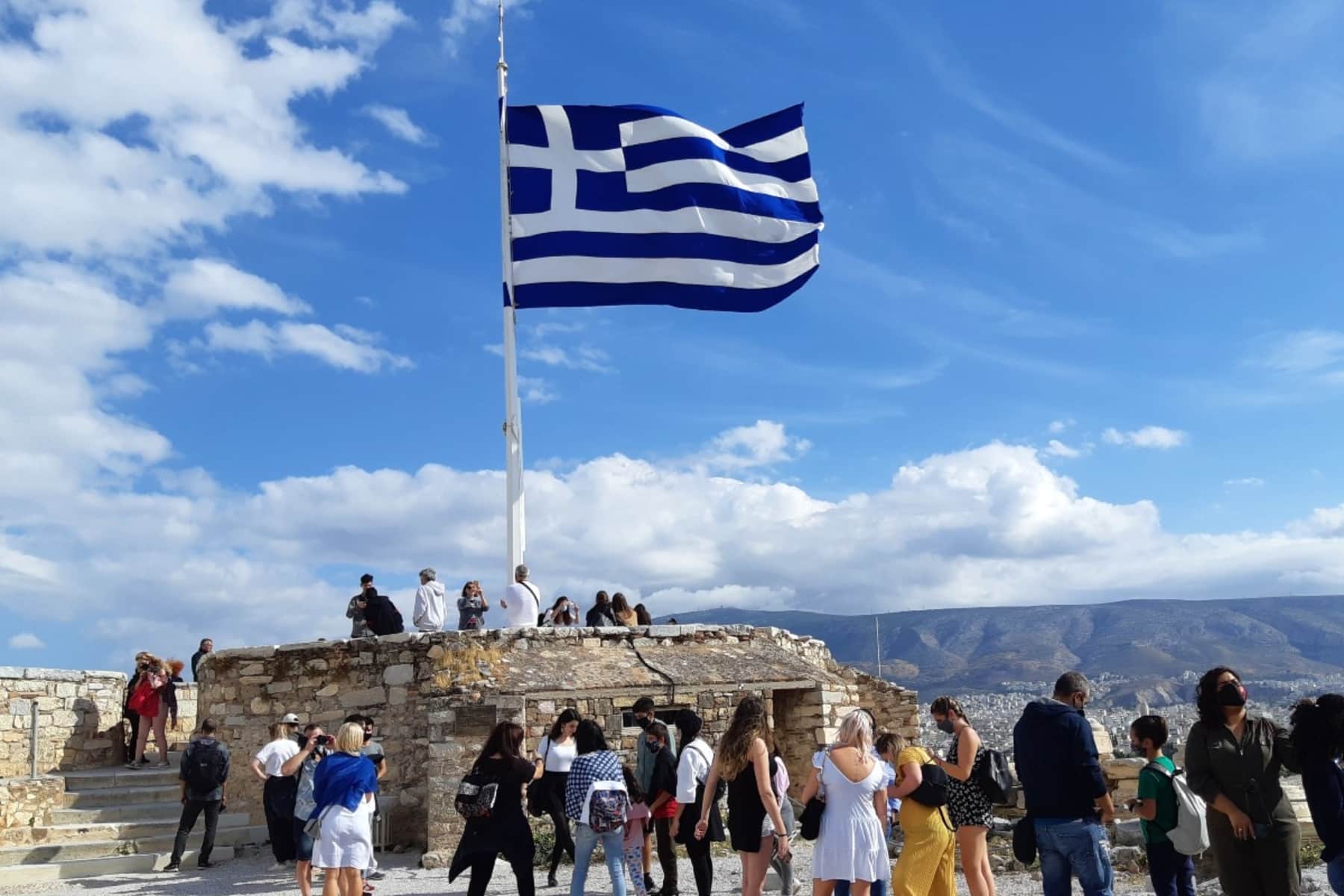
(Source: Real Greek Experiences)
Modern Usage and Protocol
Today, the Greece flag is displayed with pride at Greek embassies worldwide, flies over government buildings, and is prominently featured during national holidays and celebrations. Greek Independence Day (March 25) and Ohi Day (October 28) are particularly significant occasions when the flag is displayed throughout the country.
The flag protocol in Greece dictates specific rules for displaying the flag, including proper folding techniques, appropriate times for raising and lowering, and respectful handling. These protocols ensure that the flag continues to be treated with dignity befitting a national symbol.
During international sporting events, especially the Olympics, the Greece flag holds special significance as Greece is considered the birthplace of the Olympic Games. The sight of Greek athletes carrying their blue and white flag during opening ceremonies creates an emotional connection to the ancient Olympic traditions.
Interesting Facts About the Flag of Greece
1. There Are Actually Two Official Greek Flags
Many people don’t realize that Greece technically has two official flag designs. The current striped version is used for most purposes, but there’s also a simpler version featuring just the blue field with the white cross (without the stripes) that’s used for certain ceremonial and military purposes. Both are considered equally official under Greek law.
2. The Exact Shade of Blue Has Changed Over Time
The blue in the Greek flag hasn’t always been the same shade. Historical versions used different blues, from navy to royal blue to the current azure shade. The exact color specification was standardized relatively recently, ensuring consistency across all official flag productions.
3. The Flag Inspired a Popular Greek Song
The colors of the Greek flag inspired the famous Greek song “Galanolefka” (Blue and White), which became an unofficial anthem celebrating Greek identity. The song specifically references the flag’s colors and their connection to the Greek landscape and spirit.
4. It’s Displayed Year-Round at the Acropolis
Unlike many historical sites that only display flags during special occasions, the Athens Greece flag flies continuously at the Acropolis. This creates one of the most photographed flag displays in the world, with the ancient Parthenon providing a stunning backdrop for the modern Greek symbol.
5. The Cross Design Has Mathematical Precision
The Greek cross on the flag isn’t just casually placed – it follows precise mathematical proportions. The cross arms are exactly one-fifth the width of the blue canton, and the canton itself is exactly two-fifths the width of the entire flag. This mathematical precision reflects the Greek appreciation for geometry and proportion.
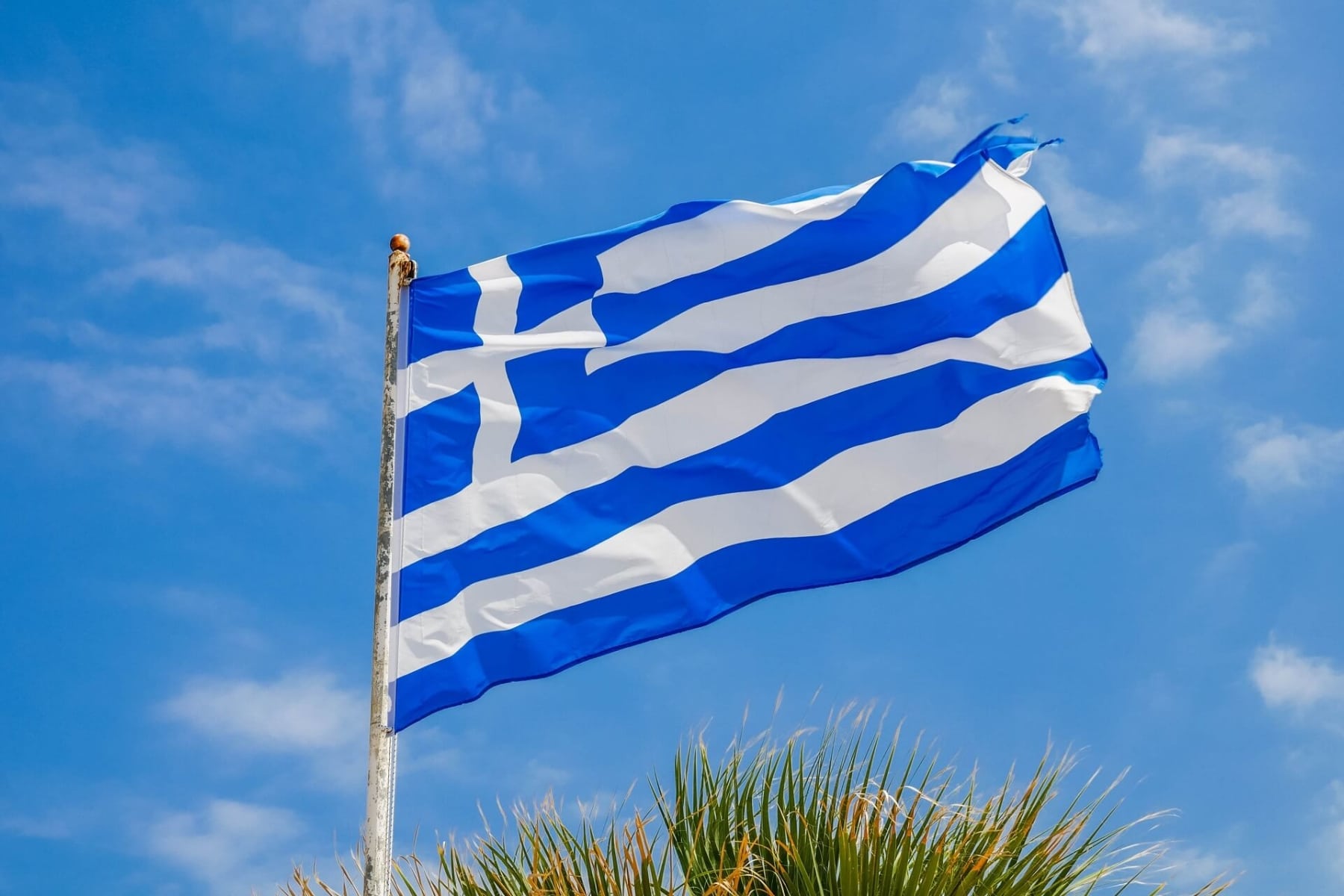
(Source: AllinCrete)
In Summary
The Flag of Greece is an emblematic representation of national identity, heritage, and the enduring values of freedom and faith. Its stripes tell tales of sacrifice, commitment, and the profound connection Greeks share with their culture.
Feel free to share your thoughts on Greece’s flag or any other questions you might have about national symbols. After all, understanding the stories behind these emblems can enrich our appreciation of cultures worldwide. If you’re looking for flags that symbolize pride and history, consider exploring our collection at Flagwix!
>>> Read more: History, Meaning, and Interesting Facts of the Canadian Flag
FAQ
What do the colors of the Greek flag mean?
The blue stands for the sea and sky of Greece, while white represents purity and the nation’s enduring pursuit of freedom.
Why does the Greek flag have nine stripes?
Each of the nine stripes corresponds to a syllable in the patriotic phrase “Ελευθερία ή Θάνατος” (“Freedom or Death”), a key motto during the Greek War of Independence.
What is the significance of the cross in the canton?
The white cross honors the central role of the Greek Orthodox Church in Greece’s national identity and its struggle for independence.
When was the current design of the Greek flag adopted?
The current design was officially unified for both land and sea use in 1978.
How is Greek Flag Day celebrated?
Greek Flag Day, celebrated on October 27, involves parades, ceremonies, and public displays of the flag throughout the country.

I am a writer with a passion for flag history, symbolism, and design. I love exploring the deeper meanings behind flags and how they connect people, traditions, and personal expression.
